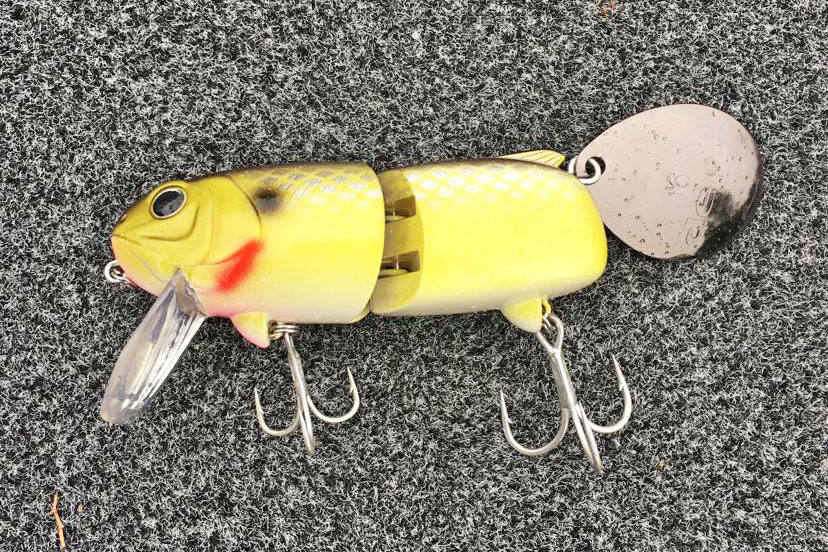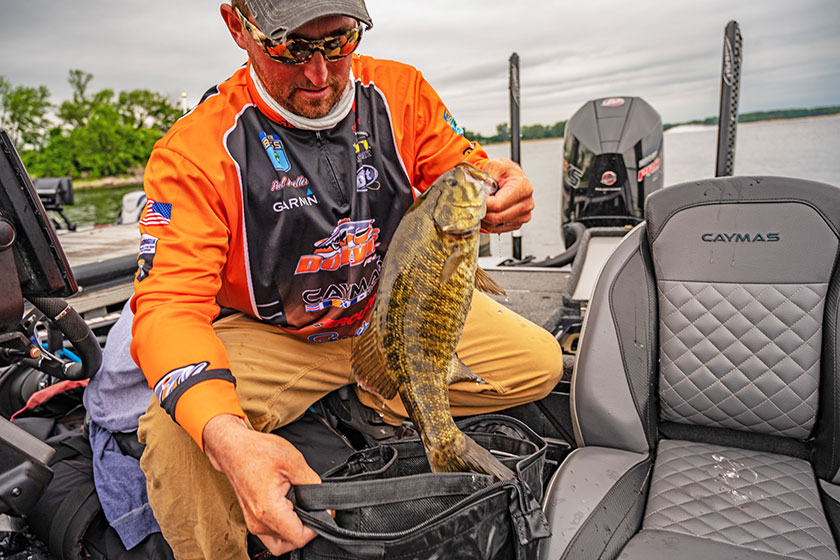September 04, 2021By Justin Brouillard
Part 1: Magical Topwater Part 2: Walking Baits
Part 2: Magical Topwater Part 2: Popping Baits
Part 3: Magical Topwater Part 3: Plopping and Crawling Baits
As summer passes the mid-point and creeps into the dog days, a lot of anglers put down the topwaters in favor of other popular baits. Elite Series Pro Paul Mueller relies on a topwater all season long and uses a variety of types of topwater baits and techniques.
In this 5-Part Series, Mueller takes us through the different types of topwater baits, when and where he employs them, why he chooses one over others, and his favorite gear for success.
Wake Style Baits
Before the plopper-style bait came about, the wakebait was the go-to topwater for Mueller. As a unique and more subtle bait, a wakebait works when the fish won\’t commit to exploding on a plopper or walking-style baits. It takes a patient approach, fishing slower—you have to find the sweet spot for the speed.
“After the bass transition from other types of topwater and the water gets warmer, a wakebait will cater to lazier fish, AKA largemouth. The surprising thing is smallmouth will hammer it also—especially on days when other topwater\’s won\’t work.”
As a bluegill imitating bait, anywhere there are groups of baitfish, Muller will tempt bass with a wakebait. Over the top of any types of grass or lily pads, he is not afraid to fish over deeper grass or dirt shallow and lets the fish dictate the location.
“On tidal rivers with shallow flats, a wakebait will get spooky fish to commit. Places like the Potomac River, Chesapeake Bay, or even the Connecticut river, if you can get the bait in front of those fish the wakebait will clean up.”
Not only does a wakebait produce later in the summer, there are some scenarios when Mueller will employ one earlier in the season as well. For postspawn fish that are lethargic and finicky, and fish that are eating bigger alewives or perch, a wakebait fits the bill. Mix in some stained water, and the bite is even better.
“More people overlook this presentation than any other topwater, especially in the north. They are very popular in the blueback herring lakes down South, but when you come up north, it\’s not thrown much at all—its big time overlooked.”
Baits
Similar to the other types of topwaters, Mueller finds success rotating through finesse and larger sized wakes. The finesse sizes let him target all size fish and get more bites. Obviously, the larger bait is a big-fish plug and Mueller likes it when he needs big bites.
He utilizes a one-two punch for finesse wakebaits. The first, an Ima Romba. The Roubma is a 3-inch bait that dives 0 to 2 feet, and it has a wide, round body with attention-grabbing rattles.
“The Roumba works so well because it mimics the bluegills, and is easy meal for lazy fish. I like a slow easy retrieve, skimming the top and stirring up the surface. The unique clicking rattles draws fish further away. I like the Fred’s Perch color in the Roumba.”

The other is a PH Customs Wake Up Topwater. The Wake Up is a jerkbait look-alike, but with a wakebait action. Mueller has come to utilize it more and more in recent years and notes it’s a subtle bait with no rattles.
“The PH Customs Wake Up is unique and is made from premium handcrafted balsa wood. It is 5 inches long and provides fish a super attractive action. It looks like a floating jerkbait but it\’s much more.”
A larger wakebait that Mueller keeps on-hand is a Deps Buzzjet. At 4 inches, Mueller calls the Buzzjet the “OG plopper before ploppers were cool.” Throwing it over deep-water milfoil, the Buzzjet will call them up from below with its noise, bigger profile, and commotion—but it doesn’t have a crazy action.
The other bait is a Deps MT Wake. With a big No. 6 Colorado blade for increased action, the 3.75-inch bait weighs in at 1.7-ounces. With short twitches of the rod, the wide lip creates a wide wobbling action that helps to draw fish from cover.

“The bait is designed for big bass. When you\’re dealing with big fish, you won’t not get many bites,” he said. “The internal rattling chamber and squeaking noise from the joins rubbing together will catch the biggest fish the lake has to offer.”
Gear
Rods: Dobyns Fury 733C (Open Water) Dobyns Fury 734C (Around Cover)
Reel: Lew\’s BB1 Pro 8.1:1
Line: 17 or 20-pound Gamma Poly Flex Copolymer
Similar to the other types of topwaters in parts one through three, Mueller uses two different style rods depending on the size of the bait and the type of cover. The Dobyns Fury 733C provides enough rod for finesse-size baits in open water and he will bump up to the Fury 734C around cover and when using larger baits. The super-fast Lew’s reel and 17 or 20-pound Gamma Poly Flex does the trick for all the wakes Mueller might utilize.



